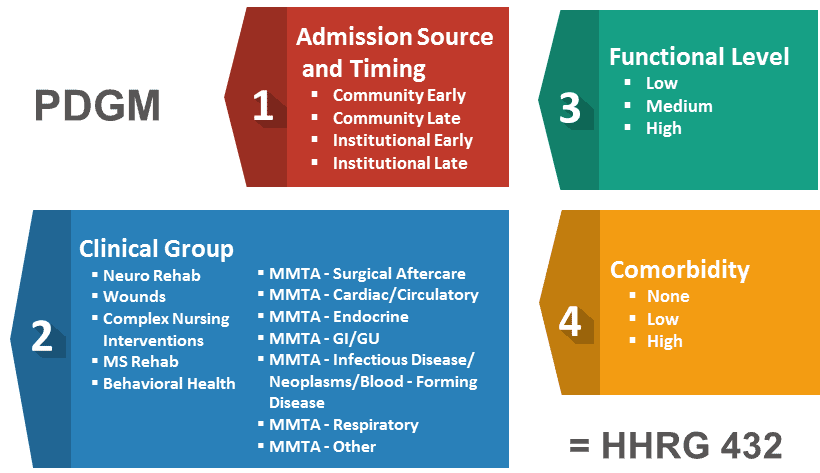Patient Driven Group Model or PDGM is a payment model that replaces Home Health Prospective Payment System also known as PPS for short. The new model was much awaited and finally implemented in January 2020. The purpose of PDGM is to remove anomalies associated with the previous payment model where there was rampant over-billing through unwarranted therapy for patients by a few home health agencies.
Overview of changes affected by the PDGM Model
Shorter periods
The period for payment is reduced from 60-days to 30-days. With the reduction in the 30 days, the time from the occurrence of the patient episode is determined as late or early as per the reporting time. This is advantageous for patients who will receive the right care from home health agencies that will revamp their workflow management with better coordination and avoid hindsight biases.
Payment groupings
The different groupings for payment will be primarily divided into two sub-groups based on admission source community or institutional. Based on the time it is further subdivided into four early or late sub-groups. PDGM in all has 432 case-mix groups for payment with twelve clinical groupings, three functional impairment levels, and three comorbidities levels.
Relevant therapy
PDGM stresses compensating as per the diagnosis coding. Therapy at home determined the payment earlier in the PPS model. Home health agencies under the PDGM model will not be paid as per the number of therapy visits. The new model does not disregard the need for therapy but tries to eliminate the practice of overbilling in the name of therapy.
Many patient groups and home health agencies feel this is a regressive factor in offering the requisite patient care in the comfort of the home. However, in reality, it is a big step to saving the rising costs of healthcare by nipping the problem in the bud.
Through the aid of coordination of health assistants, proactive use of telehealth services, and remote patient monitoring devices, therapy can be continued and parallelly increase patient engagement through right awareness.
Change in LUPA thresholds
The term LUPA stands for low utilization payment adjustment. It is the minimum payment received for several home visits. LUPA occurs whenever there are fewer than four or fewer in a 60-day episode. With the change in the period as per PDGM, now LUPA will auto-set itself after every 30-days from the first incident.
Home health agencies will now need to take extra care to avoid the occurrence of LUPA by consistently monitoring the reasons for any missed visits, and patient refusal to take treatment. They have to analyze the cases based on the merits to see where LUPA can be avoided and train the staff to develop strategies and best practices in patient care.
Diagnosis coding
PDGM focuses on reducing costs, fair payment for home health agencies, and delivery of patient care at home to ease the pressure on healthcare infrastructure. The initial teething problems of rolling out PDGM have been faced and crossed. And as per all the concerned stakeholders, the one thing which must be set right is the right diagnosis and documentation to facilitate the requisite coding to avoid payment rejections.
Steps to be taken by home health agencies
Home health agencies need to comprehend the parameters of PDGM and understand that it is not as complex as it seems. The model removes therapy utilization as the basis of reimbursement and uses only ICD-10 diagnosis coding. So if the diagnosis is recorded and documented properly, it will reflect in the correct coding and there will not be any rejections during payment processing. Malpractices like the overutilization of therapy by a few home health agencies were possible due to the inefficiencies of OASIS and poor coding in the earlier system.
Conclusion:
CMS has conceptualized and made PDGM effective to disallow the gaps in the system to be used as loopholes in home healthcare. Home health agencies are compensated for the need-based cost of care instead of focussing on unnecessary tests or therapies beyond a certain limit.
Depending on the severity of the case, visits from therapists can increase. However, conformity with the treatment plan and the right coding for the diagnosis must be established. Home health agencies should take steps to establish fair practices in giving the right patient care without overbilling for unwarranted visits.




